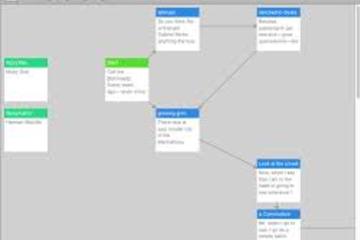TWINE: https://Twinery.org
What is it?
An Open-Source Digital Tool for Telling Interactive, Nonlinear Stories
This program is browser-based, but also is also downloadable to Windows, macOS, and Linux.
Implementation
A Twine project is made from “nodes” (or “passages”) and links between them. The application’s interface represents each node as a box, and links between nodes as arrows from one box to another.
No coding knowledge necessary.
If you can type words, and occasionally put brackets around words [[Like This!]], you can use Twine. It operates really similarly to Prezi or Powerpoint: simply double-click on the canvas to add a new passage, type into the passage, and you’re off-and-running. This is a great tool for educators who are looking to incorporate low-stakes digital tools into the classroom.
What can I do with it?
Educators can use Twine for their own tools, and students can use Twine to demonstrate knowledge on a project! Potential topics include: interactive histories, choice-based learning/projects, scenario-based learning, etc. Examples can be found at https://twinery.org/wiki/twine:education
Getting Started
To start, simply type in the address (https://twinery.org), click on “Use it online” on the right-hand side, read through the brief introduction (about 4 slides), and then click the +Story button on the right-hand side.
Common Functions
To modify the look of text in a passage, place some “tags” around a given word, phrase, or sentence. These tags are just symbols that modify the text, like quotation marks or brackets:
“BOLD”, //italics//, ~~Strikethrough~~, [[Link to passage]]
Linking Passages together…
To link to another passage, write the link text and the passage name in brackets like this: [[link text->passage name]]
Typing: [[Click here to move to Passage 2->Passage 2]]
Becomes: Click here to move to Passage 2
A helpful guide for Twine
Check out the instructional series from Dr. Adam Hammond: https://adamhammond.com/twineguide/
Twine in the Classroom
I made a sample Twine game to show students how ideas like choice and agency manifest in 1984: philome.la/wigardju/1984-sample-scene


